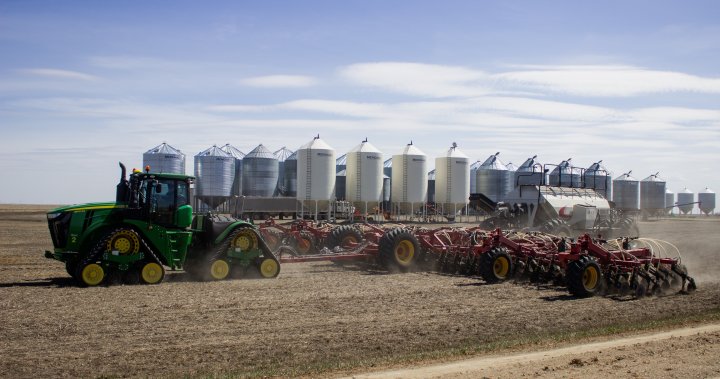Farmers in Saskatchewan are not letting the recent snowfall stop them from starting their seeding season early. Todd Lewis, a farmer with 45 years of experience, recalls extremely dry conditions in the late 1980s and early 2000s. Despite this, he and his family began seeding over 10,000 acres in 2024, ahead of their usual start date of May 1. Advancements in technology have allowed producers to plant earlier in the year and achieve better crops, with canola now commonly grown in areas where it was previously not possible.
Southern Saskatchewan is currently experiencing very dry conditions due to minimal snowfall in the winter and little rain in 2023. Crops extension specialist Matthew Struthers warns that topsoil moisture levels could quickly deplete if rain does not arrive soon. He emphasizes the importance of soil moisture and temperature for successful early seeding, acknowledging the risks associated with planting too early or too late. Farmers are anxiously waiting for rain to ensure a successful growing season, understanding the impacts of delayed seeding on their harvest.
Struthers explains that soil temperature plays a crucial role in determining the optimal time for seeding, as different crops have varying frost risks at the start of spring. While some farmers may feel the urge to start seeding early, Struthers advises against taking unnecessary risks that could negatively impact crop growth and yield. He stresses the need for moisture and favorable weather conditions for successful crop development, with hopes for rain in the forecast to alleviate the current dry spell in the region.
Despite the early start to seeding, farmers like Todd Lewis are cautiously optimistic about the upcoming season. Lewis expresses his hope for timely rain, even if it means delaying the final days of seeding. He believes that a rain delay could benefit the crops by providing much-needed moisture for growth and development. As farmers continue to monitor soil conditions and weather forecasts, they remain hopeful for a productive and successful growing season, with the ultimate goal of producing high-quality crops that will yield profitable returns.
The agricultural industry in Saskatchewan faces challenges such as dry conditions and the need for timely rainfall to support crop growth. Farmers are leveraging advancements in technology to optimize seeding practices and achieve better results. Despite the uncertainties associated with weather patterns and soil conditions, producers are proactive in their approach to planting and monitoring their crops throughout the season. By adapting to changing conditions and utilizing available resources, farmers are working towards sustainable and resilient agriculture practices that will ensure the long-term viability of their operations.
In conclusion, the early start to the seeding season in Saskatchewan illustrates the resilience and adaptability of farmers in the face of challenging conditions. By leveraging technology, monitoring soil moisture levels, and closely following weather forecasts, producers are working towards a successful and productive growing season. While uncertainties like dry conditions and the need for timely rain persist, farmers remain hopeful for favorable weather conditions that will support crop growth and yield. Through proactive management practices and a focus on sustainability, the agricultural industry in Saskatchewan continues to thrive despite the challenges it may face.


